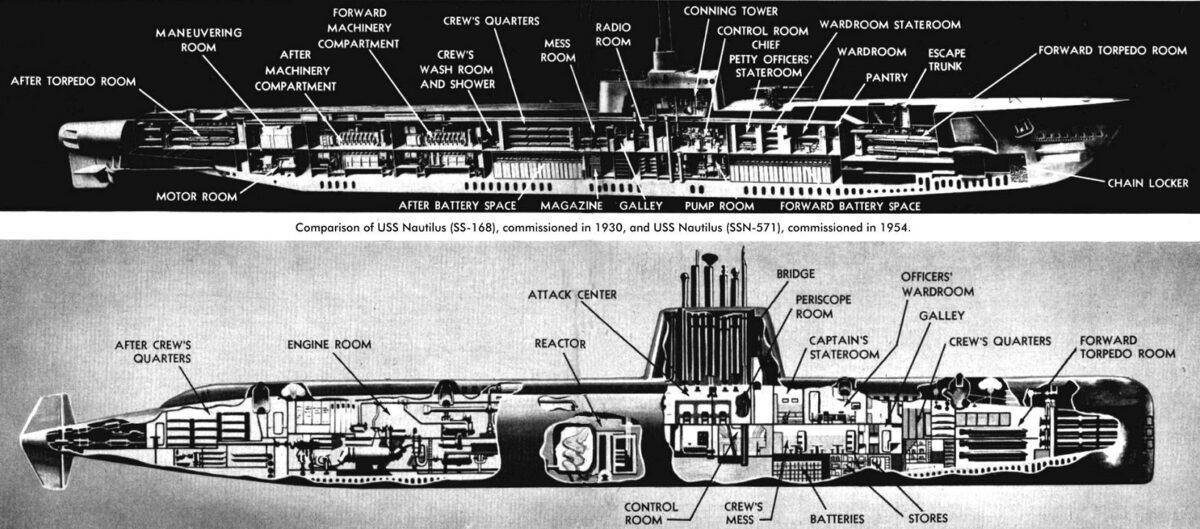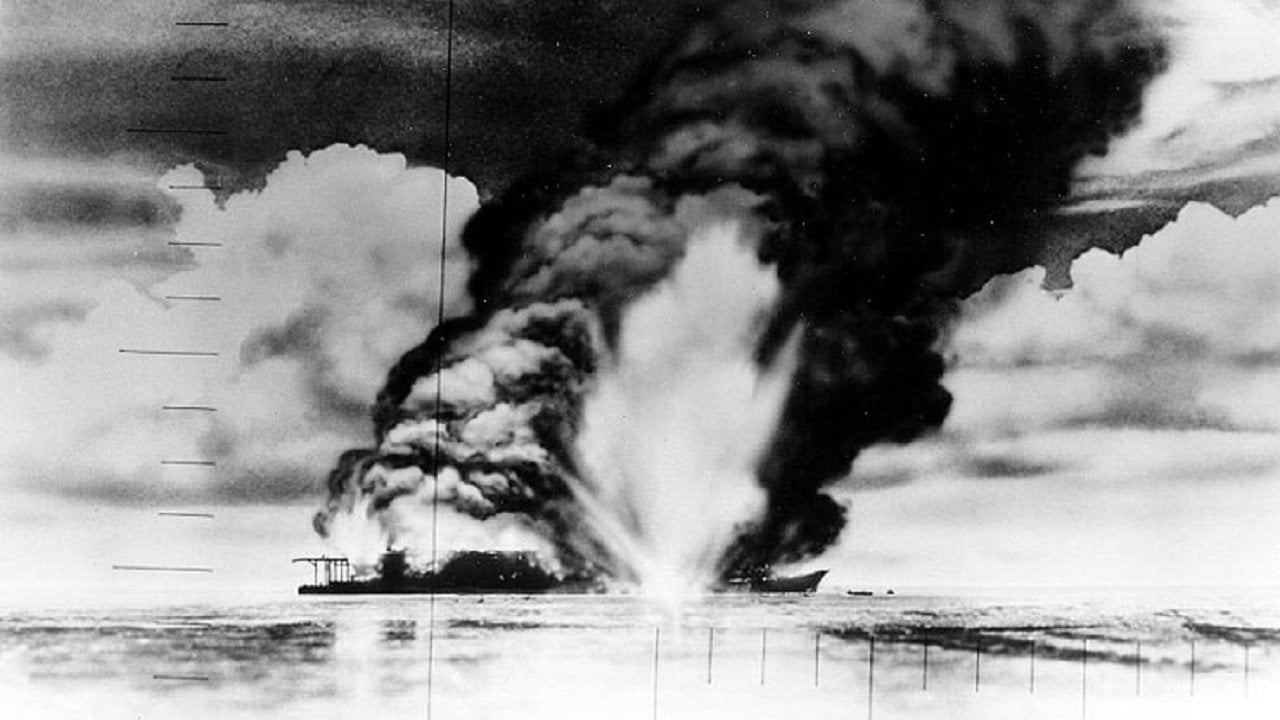In the previous installments of 19FortyFive’s ongoing coverage of the 80th anniversary of the Battle of Midway, we (1) provided a general overview of the battle, and (2) focused of the American warplanes (coming soon) that made this decisive American victory over the Imperial Japanese (IJN) possible. Today, we will conclude the series with a look at how a famous U.S. Navy submarine, the USS Nautilus, also contributed to the victory…but not in the manner that her intrepid crew had originally intended.
The Noble Nautilus Name
The name Nautilus certainly has a proud and illustrious name in the annals of submarine history. Presumably named after the cephalopod that’s part of the same biological class as the octopus, squid, and cuttlefish, the nautiloid naming convention for submersibles began with Robert Fulton’s invention in 1800. Fulton’s underwater craft is often considered to be the first practical submarine, notwithstanding Cornelius Drebbel’s 1620 vessel or David Bushnell’s Turtle of the American Revolution. For fans of 19th century sci-fi, there was the futuristic Nautilus, skippered by nebulous Captain Nemo, in Jules Verne’s 20,000 League Under the Sea. And, of course, there was Admiral Hyman G. Rickover’s pride & joy, the world’s first nuclear submarine and the first vessel to complete a submerged transit of the North Pole.
But for our purposes here and now, the WWII U.S. Navy iteration of the Nautilus, the Narwhal-class SS-168 sub, was a big-time history-maker in its own right.
Noteworthy Narwhal Nautilus
One feature that distinguished the Nautilus and her sister ship Narwhal from most other American WWII submarines was the two 6-inch (152mm)/53 caliber deck guns. By contrast, the more common Gato-class and Balao-class boats carried a single 5-inch (127mm)/25 caliber deck gun. The Nautilus’s crew would put this more powerful gun to good use on multiple occasions, sinking several enemy sampans and patrol boats, as well as using it for shore bombardments. One of these shore bombardments, in support of a raiding party hitting the beaches of Kenna Island in the Abemama Atoll on 22-23 November 1943, resulted in the destruction of a key enemy gun emplacement and 14 enemy soldiers KIA.
Nautilus also sank more than her fair share of enemy vessels with her torpedoes, including the IJN destroyer Yamakaze and multiple merchant ships. Yet ironically, her arguably greatest contribution to American victory in the Pacific Theatre of Operations in WWII happened during the Battle of Midway, wherein she failed to sink a single ship.
A History-Making Baptism of Fire
As fate would have it, the Battle of Midway would turn out to be the Nautilus’s first war patrol. Under the command of Lieutenant Commander William H. Brockman, the submarine was tasked with spotting the Japanese invasion fleet. At 0800 Local Time on the morning of 4 June 1942, she did just that, sighting IJN battleship Kirishima, cruiser Nagara, and two destroyers. Within minutes, the Nautilus was sighted from the air and underwent a depth charge attack. After the attack ceased, Nautilus rose to periscope depth and fired two of her bow tubes at Kirishima; one misfired, and one missed, and the sub dove to 150 feet (46 meters) to wait out a second depth charge attack. At 0900, Nautilus sighted one of the Japanese aircraft carriers and closed in for an attack, but endured yet another depth charge shellacking for her troubles. By 09:55, when it was safe to come back up to periscope depth, the carrier and her escorts had disappeared.
However, the Nautilus’s failed depth charge attack was not totally in vain. In an instance of the Law of Unintended Consequences proving beneficial to the American war effort, and unbeknownst to LCDR Brockman and his hardy crew at the time, one of the counter-attacking destroyers, the Arashi, in her rush to rejoin the carrier, was tracked by VB-6, the Douglas SBD Dauntless squadron led by then-LCDR Clarence Wade McClusky. Thus McClusky and his fellow SBD pilots were able to locate the Japanese task force and sink the carriers Akagi, Kaga, and Sōryū (Hiryū would be sunk later in the battle).
The rest, as the saying goes, is history, but the Nautilus wasn’t quite done yet. After the McCluskey’s Dauntlessness had done their deadly handiwork, the Nautilus sighted one of the burning carrier hulks and fired four “fish” in an attempted coup de grâce. Two torpedoes ran erratically, one failed to run, and the fourth was a dud (a common problem with the infamous magnetic exploders used in American torpedoes at the time), impacting amidships and breaking in two. In yet another ironic twist, that dud torpedo served as an impromptu life preserver for surviving Japanese sailors.
This time, Nautilus dove to the risky depth of 300 feet (91 meters) to brace for the depth charge attack. In the personal recollection of the Chief Gunner’s Mate Henry “Hank” Kudzik, “He was getting pretty close with his depth charges, oh we were really, they were really doing her number on us. And because they told us we shouldn’t we shouldn’t exceed 200 feet. 200 feet isn’t much at all, you know. His charges were going off at 300 feet and some in that range.”
Luckily, the Nautilus survived not only this ordeal but lived to see the end of the war, winning a Presidential Unit Citation and 14 battle stars along the way, before getting decommissioned on 30 June 1945. For his long-suffering actions at Midway, LCDR Brockman was awarded the Navy Cross.

Technical drawings showing the U.S. Navy submarines USS Nautilus (SS-168), in service from 1930 to 1945, and USS Nautilus (SSN-571) in service from 1954 to 1980.
A Quick Personal Addendum
Back in June 2019, during a wreath-laying ceremony for the then-77th anniversary of the Battle of Midway at the U.S. Navy Memorial in Washington, DC, I had the honor and pleasure of meeting Chief Kudzik in-person. He was 94 years young at the time and still mentally sharp as a whip with a wicked sense of humor to boot, as one might expect from such a salty sea dog. To the best of my knowledge, he’s still alive and kicking, and as I write this, I’m keeping my fingers crossed that he’ll be at the 80th-anniversary commemoration dinner tonight.
Christian D. Orr is a former Air Force officer, Federal law enforcement officer, and private military contractor (with assignments worked in Iraq, the United Arab Emirates, Kosovo, Japan, Germany, and the Pentagon). Chris holds a B.A. in International Relations from the University of Southern California (USC) and an M.A. in Intelligence Studies (concentration in Terrorism Studies) from American Military University (AMU). He has also been published in The Daily Torch and The Journal of Intelligence and Cyber Security. Last but not least, Mr. Orr is a Companion of the Order of the Naval Order of the United States (NOUS).

